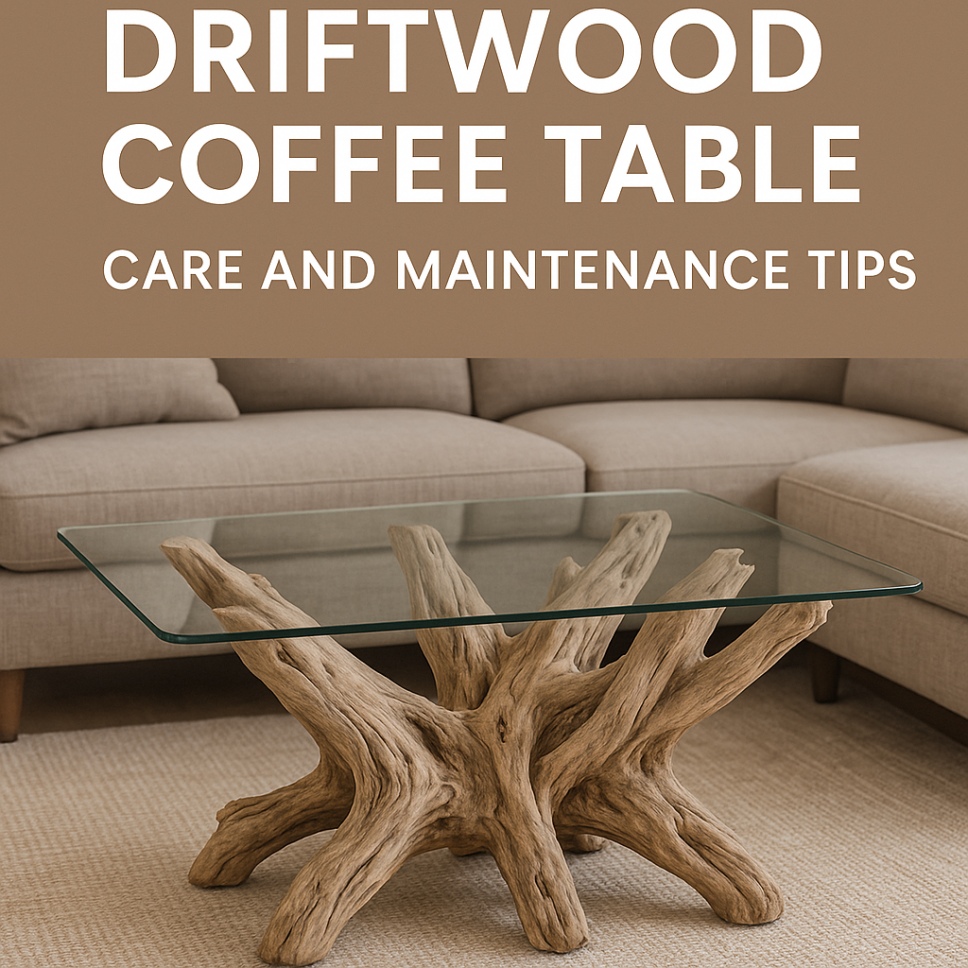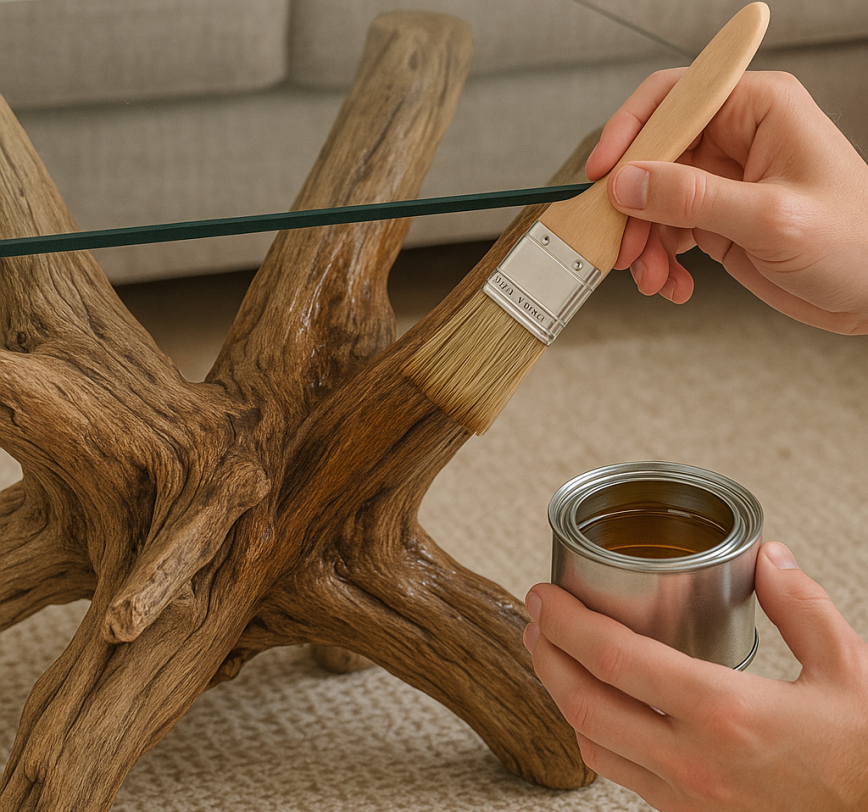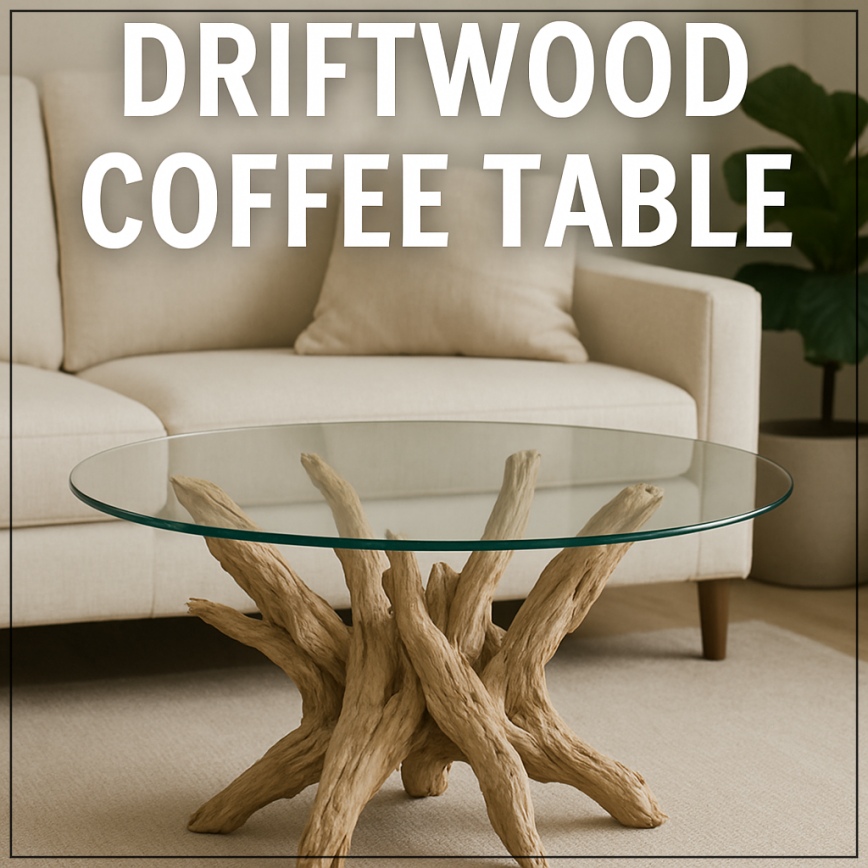Driftwood coffee tables are more than just furniture—they’re conversation starters, natural works of art, and pieces that bring a sense of coastal charm and rustic warmth into any home. Handcrafted from wood that’s been shaped by the sea, sun, and sand, each driftwood table carries a unique story and character.
But as with all things beautiful and natural, driftwood furniture needs the right care to keep its charm alive for years to come. In this guide, we’ll walk you through everything you need to know about how to clean, protect, and maintain your driftwood coffee table—so it stays stunning, season after season.

Why Driftwood Deserves Special Care?
Unlike factory-finished furniture, driftwood has a naturally weathered texture. This aged wood is porous, irregular, and often full of character—meaning it can be more vulnerable to stains, scratches, and moisture damage if not cared for properly. However, with the right maintenance routine, your driftwood table will age gracefully, developing even more character over time.
Read more: DIY Driftwood Coffee Table: Step-by-Step Guide
1. Routine Cleaning: Keep It Fresh, Not Fussy
How often?
A quick dusting once a week and a more thorough clean once a month will do wonders.
How to clean your driftwood table:
Dust regularly: Use a soft, dry microfiber cloth to gently remove dust and debris.
Spot clean: For light spills, dampen a soft cloth with water and gently blot—don’t scrub.
Avoid harsh cleaners: Never use bleach, ammonia, or any abrasive cleaning products. These can damage the wood’s natural patina.
Optional deep clean (every few months): Mix a solution of warm water and mild dish soap (a few drops is enough), then use a soft cloth to wipe the surface gently. Always dry the table completely with a clean towel after cleaning.
2. Seal and Protect: Give It an Armor
If your driftwood coffee table isn’t already sealed, consider applying a protective finish to shield it from everyday wear and tear. Driftwood is porous and can absorb liquids, leading to stains or even warping over time.
Types of finishes:
Clear matte polyurethane – Keeps the natural look while adding protection.
Natural beeswax or wood oil – Enhances the texture and gives a subtle sheen while protecting against moisture.

Pro tips:
Always test the product on a small hidden area first.
Reapply your chosen sealant every 6–12 months, depending on how often the table is used.
3. Handle With Love: Prevent Damage Before It Happens
Because of its textured surface and often irregular edges, driftwood tables can be more prone to scratches or chips. Here are some ways to protect it:
Use coasters and placemats to avoid water rings and heat damage from mugs or serving dishes.
Avoid dragging items across the surface—lift and move instead.
Keep it out of direct sunlight to prevent fading and drying out over time.
Watch the humidity: Extremely dry or overly humid conditions can cause the wood to crack or swell. Using a humidifier or dehumidifier can help regulate indoor conditions.
4. Polishing and Restoring: Bring Back the Glow
If your table starts to look a little dull, it might be time for a gentle polish or refresh.
For a natural boost: Rub a small amount of mineral oil or wood conditioner into the surface using a soft cloth, following the grain of the wood. This can revitalize the natural luster and give your table a subtle shine without making it look artificially glossy.
For scuffs or minor scratches: Use a matching wood filler or touch-up marker. For a more rustic look, you might even embrace these marks as part of the table’s natural aging process—they often add character!
5. Seasonal Care Tips: Adjust with the Elements
Driftwood reacts to environmental changes, so your care routine might shift slightly with the seasons:
In summer: Increased humidity can cause wood to swell. Ensure good airflow around the table, and use a dehumidifier if needed.
In winter: Heated indoor air can dry out the wood. A humidifier helps maintain a healthy moisture level.
During holidays or gatherings: If you’re using the table more frequently, increase the frequency of dusting and use protective coverings to avoid accidental stains or burns.

Final Thoughts: Let Your Table Tell Its Story
One of the best things about a driftwood coffee table is that it doesn’t have to look perfect—it’s the imperfections that make it beautiful. With the right care, your table will develop a rich, lived-in look that only grows more appealing with time.
Think of it not just as a piece of furniture, but as a living sculpture that evolves with your home and lifestyle.
So dust it, seal it, protect it—but above all, enjoy it. After all, every knot, groove, and grain in that driftwood tells a story—now it’s time to make it part of yours.
Got a driftwood coffee table you love?
Share your care tips or styling ideas in the comments below—we’d love to hear how you make it your own!

